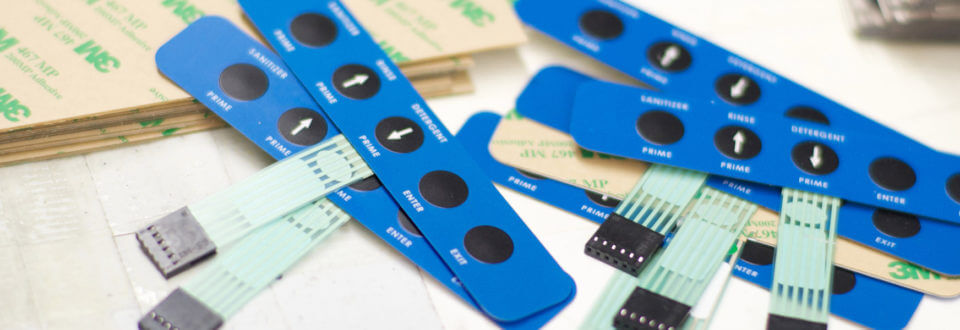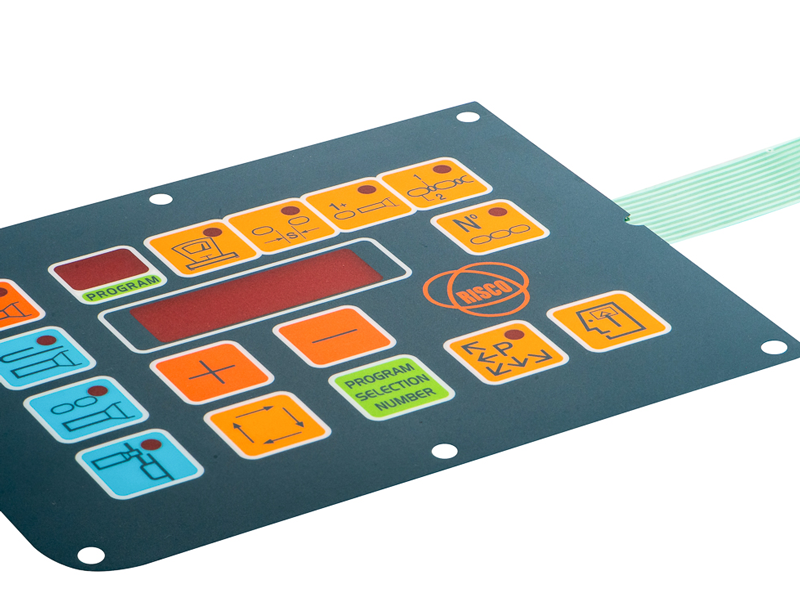A Comprehensive Guide to Membrane Switch Design and Manufacturing
Recognizing Membrane Layer Switches: The Key to Resilient and Dependable Controls
Membrane layer changes represent a critical element of modern user interface design, blending capability with durability in numerous applications. As we discover the ins and outs of membrane switches, it becomes clear that their duty in improving control systems is both extensive and complicated, elevating questions regarding just how best to take advantage of their capacities in future advancements.
What Are Membrane Buttons?
Membrane switches are an advanced remedy in the world of customer interface modern technology, combining functionality and layout effortlessly. These gadgets function as a user interface in between individuals and digital systems, incorporating several elements right into a compact style. Usually constructed from versatile, thin layers of products, membrane switches are designed to react to touch, making it possible for customers to communicate with machinery and digital tools effectively.
The main elements of a membrane layer button consist of a printed circuit layer, graphic overlay, and a spacer layer that protects against unintentional activation. The visuals overlay can be personalized to mirror brand name identification or user preferences, boosting looks while guaranteeing use. Membrane layer switches are generally used in different applications, consisting of medical devices, consumer electronic devices, and commercial equipment, owing to their durability and resistance to ecological factors such as wetness and dirt.
One of the crucial benefits of membrane switches is their ability to hold up against damage, making them ideal for high-traffic settings. Furthermore, they are light-weight and require marginal space, enabling innovative designs in item advancement. Generally, membrane layer changes stand for a sensible and effective selection for contemporary digital user interfaces, weding technology with user-centric style principles.

Just How Membrane Switches Over Job
The procedure of membrane layer switches depend upon an easy yet reliable mechanism that converts user input right into electronic signals. These buttons include several layers, generally including a graphic overlay, a spacer layer, and a circuit layer. When a user presses the switch, the top layer warps, permitting a conductive component in the circuit layer to make contact with an equivalent conductive pad on the underside of the graphic overlay. This call closes the circuit and sends a digital signal to the device, showing that the switch has actually been activated.
The style of membrane buttons can vary, yet they commonly integrate domes or tactile elements to offer comments to the customer, improving the general experience. The products made use of in membrane layer buttons, such as polyester or polycarbonate, add to their longevity and resistance to ecological aspects, including wetness and dust. The published circuits are typically enveloped, which secures them from wear and tear over time.

Advantages of Membrane Buttons
One of the primary advantages of membrane switches is their versatility in style, permitting them to be tailored to satisfy details individual requirements and aesthetic needs. This versatility includes different industries, where different forms, sizes, and colors can be utilized to boost customer Visit This Link interaction and visual allure.
In addition, membrane layer buttons are understood for their durability. Built from robust products, they are immune to dirt, moisture, and physical wear, which dramatically expands their life-span compared to typical mechanical buttons. This sturdiness makes them particularly ideal for high-traffic environments and applications calling for long life.

Furthermore, membrane layer buttons provide a structured profile, resulting in a thinner design that can be incorporated right into various gadgets without adding mass. This feature not just improves the visual charm however also adds to a more ergonomic item design.

Applications of Membrane Switches
User-friendly and versatile, membrane buttons discover applications throughout a vast array of industries, including clinical gadgets, customer electronics, and industrial equipment. In the medical area, these buttons are indispensable to gadgets such as diagnostic tools, person tracking systems, and infusion pumps, where dependability and simplicity of cleaning are critical. Their capacity to stand up to rough environments and preserve functionality makes them excellent for such applications.
In consumer electronic devices, membrane switches are used in items like microwaves, cleaning machines, and remotes - membrane switch. Their sleek design permits intuitive customer interfaces, enhancing the general user experience while giving toughness and resistance to damage
Industrial equipment also takes advantage of membrane buttons, particularly in control panels for equipment and automation systems. These buttons offer protection against dirt and moisture, ensuring constant performance in challenging environments. Additionally, their adjustable features allow makers to customize them to details functional demands, boosting efficiency and performance.
Choosing the Right Membrane Switch
When selecting a membrane layer button, it is vital to think about numerous variables that affect performance and viability for details applications. The primary factors to consider consist of ecological problems, tactile responses, resilience, and style requirements.
First, Related Site examine the operating atmosphere; switches subjected to moisture, chemicals, or severe temperature levels require certain products to ensure longevity and functionality. Next, assess the requirement for tactile feedback. Depending on individual interaction, some applications may take advantage of a tactile response to validate activation, while others might favor a non-tactile layout for visual reasons.
Toughness is another essential variable; membrane switches must be designed to endure regular use, effects, and abrasion. Make certain the chosen switch can sustain the expected lifecycle, particularly in high-usage scenarios.
Final Thought
Finally, membrane layer changes offer as essential components in the design of sturdy and reliable control systems across numerous markets. Their small layout, integrated with robust building and construction and adjustable functions, boosts customer interaction while making certain durability sought after environments. The flexibility of membrane changes permits for tailored solutions that fulfill certain operational requirements, enhancing their relevance in contemporary innovation. membrane switch. As industries proceed to develop, the value of incorporating effective membrane layer switch options can not be overemphasized.
Membrane layer changes represent an important element of modern-day interface style, mixing performance with strength in various applications.Membrane layer switches are a sophisticated solution in the realm of user interface modern technology, integrating functionality and style seamlessly. Usually created from versatile, slim layers of materials, membrane switches are designed to respond to touch, allowing users to engage with equipment and digital gadgets effectively.
The design of membrane layer switches can differ, but they often integrate domes or tactile aspects to give comments to the customer, improving the total experience.In verdict, membrane switches offer as essential parts in the design of dependable and resilient control systems across numerous sectors.